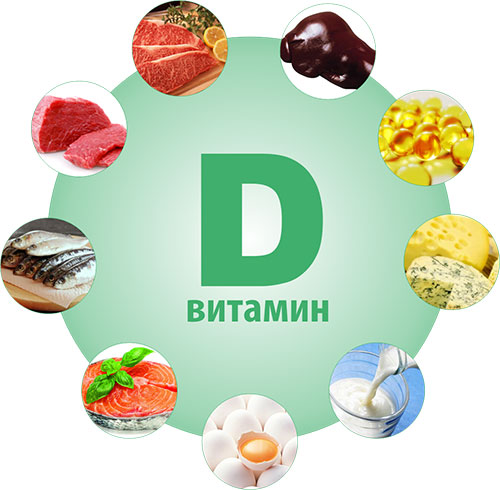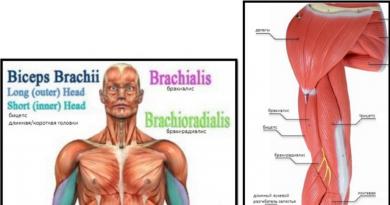We live in a country that is mean in the sun and warmly. The hot summer sun is not able to compensate for 10 months of rain and endless clouds. In addition, many of us spend quite a lot of time indoors.
It is not surprising that a huge number of people, not only in Russia, but throughout the world, suffer from vitamin D deficiency.
- Frequent fractures;
- Pale skin;
- brittle hair and nails;
- sweating;
- Muscle weakness.
Here are some of the effects of vitamin D deficiency.
According to recent data, vitamin D deficiency not only reduces bone density and leads to, but also increases the risk of developing various types of cancer, type 1 and 2 diabetes, cardiovascular disease and obesity.
What is vitamin D, why it is not enough and where to get it, read below.
Why do we need vitamin D?
Vitamin D, first of all, is necessary for us so that we can absorb from food. Without vitamin D, calcium cannot be absorbed normally from the intestines.
Also, vitamin D directs calcium to the bones and allows it to be retained inside, maintaining normal bone density.
For normal muscle function calcium is also required. Therefore, if you do not have enough vitamin D, you may experience muscle weakness and fatigue during physical exertion.

Calcium is also needed for insulin release from pancreatic cells. Therefore, insufficient amounts of vitamin D and calcium can lead to the development diabetes.
So, according to the NHANES III study, low levels of vitamin D were associated with a higher incidence of type 2 diabetes. At the same time, if people were prescribed vitamin D preparations, their cells began to better perceive their own insulin (insulin resistance decreased), and this led to a decrease in blood sugar levels.
Vitamin D deficiency symptoms
- Weakness, fatigue;
- sweating;
- Fragility of hair and nails;
- Pain in the bones, especially when pressed;
- Frequent fractures.
Causes of Vitamin D Deficiency
- Insufficient exposure to the sun
Most often occurs in older people who have difficulty with movement and are almost all the time indoors. Also, people who often visit hospitals or work all daylight hours indoors or underground suffer from a lack of sunlight.
- Vitamin D absorption problems
It is most common in people with a partially removed small intestine, celiac disease, short bowel syndrome, and cystic fibrosis. If you do not know these words, then this option is unlikely for you.
- Medicines
Some medicines can reduce the amount of vitamin D in the body. These include:
- Phenobarbital (contained in Corvalol);
- Phenytoin (an anticonvulsant, antiepileptic agent);
- Rifampicin (an antibiotic used to treat tuberculosis).
- Laxatives (impair absorption of vitamin D from the gut and may interfere with vitamin D and calcium metabolism)
- Glucocorticosteroids (used for asthma, rheumatoid arthritis, systemic lupus erythematosus, multiple sclerosis and other diseases of the immune system). They not only stimulate the excretion of vitamin D from the body, but also lead to the “washing out” of calcium from the bones.
- Not enough vitamin D in breast milk
If you are exclusively breastfeeding your baby with no complementary foods or formula milk, vitamin D supplements should be given from about 2 months of age. For doses and specific supplements, it is best to consult your pediatrician.
Vitamin D levels fluctuate throughout the year. Most of all it is in the summer months, and lowest of all - in the winter-spring period. Seasonal fluctuations in vitamin D are especially pronounced in men who lead an active lifestyle.
Who is at risk for vitamin D deficiency?
 Most often, vitamin D deficiency affects aged people.
Most often, vitamin D deficiency affects aged people.
After all, with age, our skin ceases to produce vitamin D in the same quantities as in youth. In addition, the elderly tend to spend more time indoors and spend more time in hospitals, which is not conducive to sunbathing.
However, not only the elderly suffer from vitamin D deficiency. It is estimated that up to 65% young citizens by the end of winter have insufficient levels of vitamin D or its deficiency.
Vitamin D deficiency is also common in pregnant women. They are generally characterized by micronutrient deficiencies, and vitamin D is no exception. During pregnancy, vitamin D affects not only the bones of the woman herself, but also the health of her child.
 According to one study, children of women who were deficient in vitamin D at 18 weeks of gestation had difficulty remembering, retaining, recalling information, concentrating, and were easily excitable at 10 years of age. In adolescence, they also had a greater risk of developing an eating disorder. And by age 20, they had lower bone density than their peers.
According to one study, children of women who were deficient in vitamin D at 18 weeks of gestation had difficulty remembering, retaining, recalling information, concentrating, and were easily excitable at 10 years of age. In adolescence, they also had a greater risk of developing an eating disorder. And by age 20, they had lower bone density than their peers.
So if you're pregnant, remember to eat enough vitamin D foods and get regular sun exposure.
How to compensate for vitamin D deficiency?
To prevent vitamin D deficiency, it is necessary to receive it at a dose of at least 800 IU per day. I recommend that my patients take it at a dose of 1000-1500 IU per day. Doses up to 2500 IU per day are considered safe for daily intake.
Major Dietary Sources of Vitamin D

- Cod liver 10 g - 1000 IU
- Oily sea fish (salmon, cod) 100 g - 300 IU
- Animal liver 100 g - 50 IU
- Butter - 35 IU
- Egg yolk - 25 IU
These products are very fatty and high in calories, so you should not abuse them. This is especially true for overweight people.
Most vitamin D is produced in the skin during sun exposure.

What's more, the vitamin D produced by our skin lasts twice as long in the body than the vitamin we get from food or vitamin supplements.
Vitamin D is especially well produced between from 10 to 15.00.
According to various recommendations, in order to get the optimal amount of vitamin D, you need to be in the sun for 15-30 minutes a day, exposing your face and hands to the sun's rays. If you sunbathe with your whole body, as, for example, at sea or while working in a summer cottage, you can get from 10,000 to 25,000 units of vitamin D.
But do not worry, prolonged exposure to the sun does not cause an overabundance or intoxication with vitamin D. Excessive amounts of it turn into inactive metabolites: tachysterol and lumisterol and are excreted from the body.
At the same time, the further north you live, the longer you need to stay in the sun.
What reduces the production of vitamin D by the skin?
- Age
As we age, the skin's ability to produce vitamin D decreases. This is due to dystrophic processes in the body and is completely normal.
- Dark skin color
This is evolutionarily justified, because dark-skinned people usually live in very sunny countries. But when they move north, they are more likely to be deficient in vitamin D than their white counterparts.

- Use of sunscreen
Sunscreen not only protects us from sunburn, but also reduces the skin's ability to produce vitamin D.
Who needs to take vitamin D supplements?
- To those who have vitamin D level (25-OH-D) in blood below 21-29 ng/ml (52.5-72.5 nmol/l).
- To old people
As we age, our skin loses its ability to produce vitamin D. Therefore, the older we get, the more vitamin D we need to consume in our diet.
For older women, this is especially important. After all, they are more likely to suffer from osteoporosis - a disease accompanied by a decrease in bone density and an increase in their fragility and the risk of fractures of the spine and femoral neck.
Thus, according to a meta-analysis by Bischoff-Ferrari et al, consumption of 400 IU of vitamin D per day reduced the risk of hip fractures by 20% in people over 65 years of age.
Vitamin D can not only strengthen bones, but also increase muscle strength. And this allows you to reduce the frequency of falls, as the muscles that maintain the balance of the body begin to work better.
- Women after menopause
After menopause, our body stops producing estrogens. This leads to the fact that it begins to “wash out” of the bones, and osteoporosis may develop. To stop this process, you need to get enough vitamin D from food.
After menopause, women need to take at least 800 IU vitamin D per day
and better - 1000-1500ME.
Numerous studies support the benefits of vitamin D supplementation after menopause. Thus, according to a meta-analysis by Boonen et al, a daily intake of 800 IU of vitamin D reduced the risk of hip fractures by 18% in women and men over 50 years of age.
What vitamin D supplements should I take?
There are several different vitamin D preparations: cholecalciferol, ergocalciferol, dihydrotachysterol, alfacalcidol. Depending on age and concomitant diseases, one or another drug is selected. An endocrinologist or therapist will help you with this. It is better to select a specific dose of drugs depending on your level of vitamin D. Therefore, if you are concerned about this issue, it is better to donate 25-OH-D in the blood before visiting a doctor. This can be done in any commercial laboratory. Unfortunately, this analysis is not included in the MHI system.
Too much vitamin D
As already mentioned above, with excessive exposure to the sun, an excess of vitamin D is unlikely. But with the use of vitamin D preparations, it is quite possible. That is why, before starting a course of treatment, it is necessary to check the level of 25-OH-D in the blood. After all, the dose of vitamin D preparations that your doctor will prescribe and the duration of their intake will depend on this level.
Vitamin D overdose is most often associated with increased levels of calcium in the blood. Most often, this condition occurs without symptoms, but in some cases it can be suspected by the following manifestations:
- Heart rhythm disorder
- Nausea, vomiting
- Constipation, abdominal pain
- Loss of appetite
- intense thirst
- Frequent urination
- The formation of kidney stones
With a prolonged increase in the level of calcium in the blood, it is possible to deposit it in the vessels and internal organs. Therefore, while taking high doses of vitamin D supplements, doctors monitor the level of calcium in the blood.
I draw your attention to the fact that an overdose of vitamin D preparations or an increase in the level of calcium in the blood is possible only on high doses vitamin D preparations and their uncontrolled use. If you take 800-1500 IU per day to prevent vitamin D deficiency, you are unlikely to overdose.
Who should not take vitamin D supplements?
Vitamin D supplements should not be taken by people suffering from:
- Peptic ulcer of the stomach and duodenum in the acute stage;
- kidney failure;
- nephrourolithiasis (kidney stones);
- chronic heart failure
- Sarcoidosis;
- Tuberculosis of the lungs in active form.
I hope you got answers to your questions. If not, ask them in the comments.



